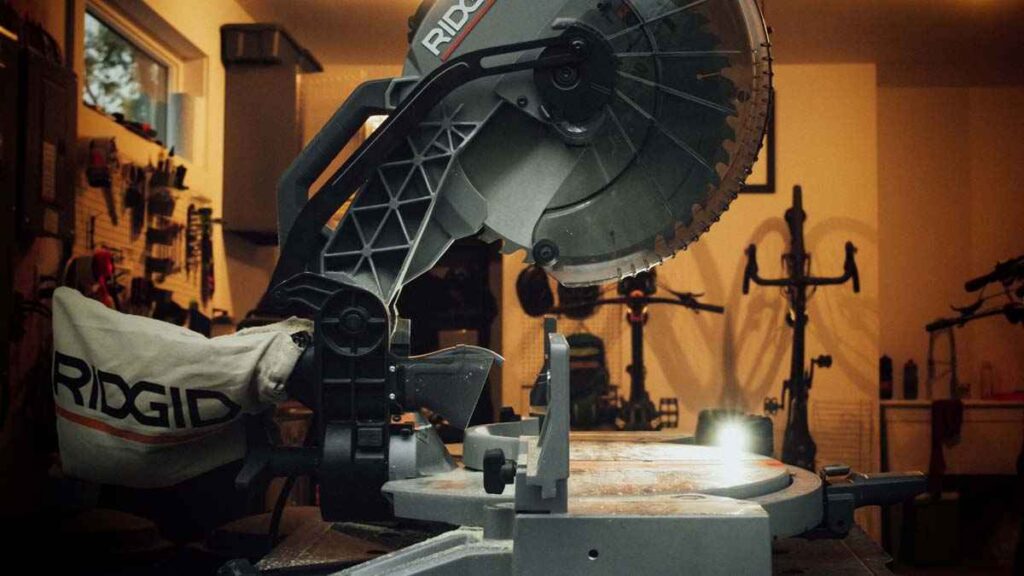Working with a miter saw can be enjoyable but it often produces a lot of sawdust which can make a mess in your workspace and it can be dangerous if inhaled. This is where a miter saw dust collection system comes in help. In this post, we’ll look at the common ways and components used to keep a clean and safe workstation when using a miter saw.
Why Dust Collection Matters
Before we get into the methods and components, it’s essential to understand why a miter saw dust collection is crucial:
Health and Safety: Sawdust contains fine particles that can be harmful when inhaled. Prolonged exposure may lead to respiratory issues, allergies, or more severe health problems. It can also irritate the eyes and skin. Proper dust collection minimizes these risks.
Clean Workspace: Excessive sawdust can clutter your workspace, making it harder to work efficiently and safely. A clean environment is essential for precision and focus.
Tool Longevity: Sawdust can infiltrate your miter saw’s motor and moving parts, causing premature wear and tear. Dust collection systems help extend the life of your tool.
Common Methods for Miter Saw Dust Collection
There are several methods to tackle sawdust at its source each with its own pros and cons. The most popular methods are as follows:
Bag or Box Systems
Bag or box systems are one of the basic and most affordable ways to collect sawdust from a miter saw. They typically consist of a cloth or plastic bag attached to a port on the saw. As you cut, the sawdust is directed into the bag, where it collects.
Pros:
- Affordable and easy to install.
- Suitable for small workshops or occasional use.
- Portable and easy to empty when full.
Cons:
- Limited capacity, requiring frequent emptying.
- May not capture all the dust, leaving some in the air.
Shop Vacuum Attachment
Many miter saws can be connected to a shop vacuum using a dust port or attachment. This method uses the suction power of the vacuum to capture the dust as it’s generated.
Pros:
- Effective at capturing most of the dust.
- Can be connected to a larger central dust collection system.
- Relatively affordable.
Cons:
- Requires a compatible shop vacuum.
- Some dust may still escape if not properly sealed.
Hood or Shroud Systems
Hood or shroud systems are more sophisticated and efficient. They consist of a hood or shroud that encloses the area around the saw blade. A dust collection hose is connected to this hood, capturing dust as it’s generated.
Pros:
- Highly effective at capturing dust at the source.
- Suitable for heavy-duty and professional use.
- Minimizes airborne dust.
Cons:
- More complex to install and set up.
- Can be costly compared to simpler methods.
Integrated Dust Collection
Some high-end miter saw models come with integrated dust collection systems. These saws have built-in hoods, dust channels, and collection bags or bins designed to capture dust efficiently.
Pros:
- Extremely effective and convenient.
- Seamless integration with the saw’s design.
- Ideal for professional woodworkers.
Cons:
- High initial cost.
- Limited to specific saw models.
Components of Miter Saw Dust Collection Systems
Regardless of the method you choose, miter saw dust collection systems share common components that work together to keep your workspace clean:
Dust Port: This is the connection point on your miter saw where you attach the collection system. It can vary in size and shape, so ensure compatibility with your chosen collection method.
Collection Container: This is where the sawdust is collected. It can be a bag, box, bin or vacuum canister, depending on the method you’re using. Make sure it’s easy to access and empty.
Hose or Ducting: A hose or duct connects the dust port on your miter saw to the collection container. It’s essential to use the correct size and length for efficient dust capture.
Seals and Gaskets: To prevent dust from escaping, ensure that all connections between components are sealed properly. This reduces airborne dust and maximizes the effectiveness of your system.
Shop Vacuum or Dust Collector: If you’re using a shop vacuum or central dust collector, ensure it has adequate suction power and filtration to capture and contain the sawdust effectively. A shop vacuum with a HEPA filter can be a good addition for smaller workshops.
Hood or Shroud: In hood or shroud systems, this component encloses the saw blade area, directing the dust into the collection system. It should be adjustable to fit different angles and cuts.
Conclusion
Keeping your workspace clean is not only important for appearance but also for protecting your health and ensuring the longevity of your tools. When it comes to collecting dust from a miter saw, there are several options available. These include basic bag systems, shop vacuum attachments or more advanced hood systems. It’s essential to choose the method that best suits your needs and fits within your budget.
To ensure your dust collection system works effectively and remains safe, it’s important to follow the manufacturer’s recommendations for setup and maintenance. By doing so, you’ll experience the many benefits of a cleaner, safer and more efficient woodworking environment. Taking these simple steps will help you enjoy these benefits to their fullest extent
Also Read
What is Silica Dust?
What is House Dust and How to Manage It?

